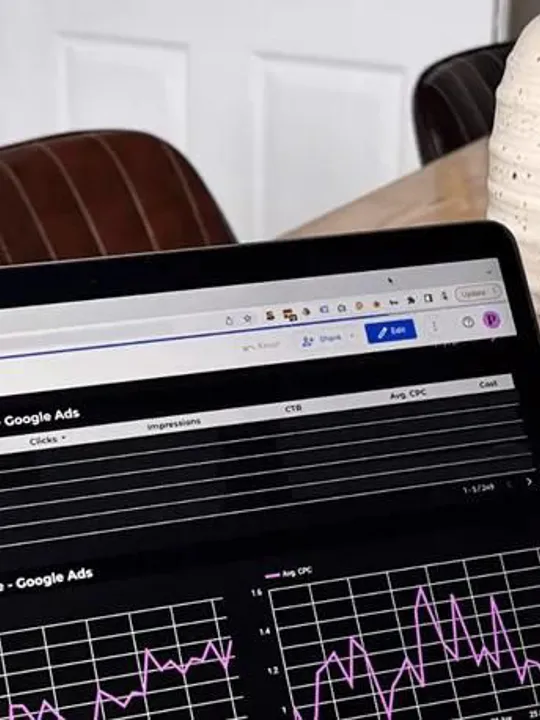Google Ads Attribution Models Explained
What are attribution models in Google ads?
In online advertising, understanding the attribution models used by Google Ads is crucial to effectively measure the impact of your campaigns and optimise your marketing strategies.
These models assign credit to each ad interaction throughout a user's journey towards conversion, enabling you to gauge the effectiveness of different campaigns, ad formats, channels, and placements.
Attribution models Google ads are frameworks that determine how much credit to assign to each touchpoint or interaction a user has with your advertising before making a conversion.
Data-driven
Data-driven attribution (DDA) is an advanced attribution model that utilises machine learning algorithms to analyse vast amounts of historical conversion data and assign credit to each ad interaction based on its actual contribution to the conversion. Unlike rule-based or statistical attribution models, DDA doesn't rely on predetermined rules or assumptions but rather learns from actual user behaviour patterns. This model is different from the other models, in that it uses your account's data to calculate the actual contribution of each interaction across the conversion path. The Data-driven model is the default attribution Google ads model for most conversion actions.
Last click
Last click attribution (LCA) is a straightforward attribution model that assigns 100% of the credit for a conversion to the last ad interaction a user engages with before completing the desired action. This model assumes that the final ad interaction is the sole driving force behind the conversion, disregarding the influence of earlier touchpoints.
How Last Click Attribution Works:
- Identification of last click: LCA identifies the last ad interaction a user clicks on before completing the conversion.
- Attribution of credit: LCA assigns 100% of the credit for the conversion to the identified last click ad interaction.
First click
First click attribution: Giving Credit to the Beginning of the Journey
First click attribution (FCA) is a simplistic attribution model that assigns 100% of the credit for a conversion to the very first ad interaction a user interacts with, regardless of whether it directly led to the conversion. This model assumes that the first ad interaction is the initial spark that ignited the user's interest and initiated their conversion journey.How First Click Attribution Works:
- Identification of first click: FCA identifies the very first ad interaction a user sees or interacts with before completing the conversion.
- Attribution of credit: FCA assigns 100% of the credit for the conversion to the identified first-click ad interaction.
Linear
Linear attribution (LA) is a straightforward attribution model that assigns equal credit for a conversion to all ad interactions along the conversion path, regardless of their position or influence. This model assumes that all ad interactions contribute equally to the user's journey towards conversion.
How Linear Attribution Works:
- Identifying the conversion path: LA identifies the entire conversion path, including all ad interactions that the user encountered before completing the desired action.
- Equal credit distribution: LA divides the conversion credit equally among all ad interactions within the conversion path.
Time decayTime decay attribution (TDA) is an attribution model that assigns more credit to ad interactions that occur closer to the time of conversion, gradually reducing the credit assigned to touchpoints further back in the conversion path. This model assumes that the most recent ad interactions have a stronger influence on the user's decision-making and are more likely to drive the conversion.
How TDA Works:
- Identifying the Conversion Path: TDA identifies the entire conversion path, including all ad interactions that the user encountered before completing the desired action.
- Attribution of Credit: TDA assigns a decreasing amount of credit to each ad interaction based on its position in the conversion path. Touchpoints closer to the conversion time receive more credit, while those further back receive less credit.
Position-based
Position-based attribution (PBA) is an attribution model that divides the conversion credit mostly between the first and last ad interactions, typically assigning 40% to each with 20% spread across the interactions in the middle. This model acknowledges that both early and late touchpoints can play a significant role in influencing the conversion decision.
How PBA Works:
- Identifying the conversion path: PBA identifies the entire conversion path, including all ad interactions that the user encountered before completing the desired action.
- Attribution of credit: PBA assigns 40% of the conversion credit to the first ad interaction and another 40% to the last ad interaction. The remaining 20% of the credit is distributed among the intermediate touchpoints.
For a detailed example of Google ads attribution, the below example can be found in Google Ads Help.

Why are attribution models important?
Measuring the true impact of campaigns: By assigning credit to each touchpoint, you can accurately assess the overall impact of your campaigns and identify the most effective campaigns, channels, ad formats, and placements.
Optimising ad spend: By understanding the role of each touchpoint, you can allocate your ad budget more effectively, ensuring that your campaigns reach the right users at the right time.
.
Personalising customer experiences: By analysing user behaviour across different touchpoints, you can tailor your messaging and offers to provide a more seamless and personalised experience.

We can help
At Cab Hospitality, we have years of experience navigating the changing platform of ads. Our skilled teams are well-versed in the attribution models of Google Ads and understand how to get the most out of a campaign, measuring the effectiveness of campaigns and helping to ensure you get the most from your ad spend!
Our teams can also assist with all areas of digital marketing, SEO, email marketing, website design and build and much more. Get in touch with us directly to discuss your unique requirements, concerns with attribution Google Ads and marketing goals for your business.